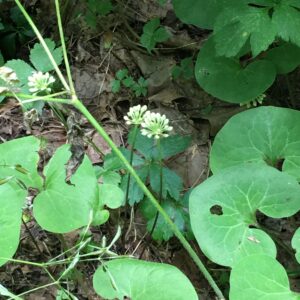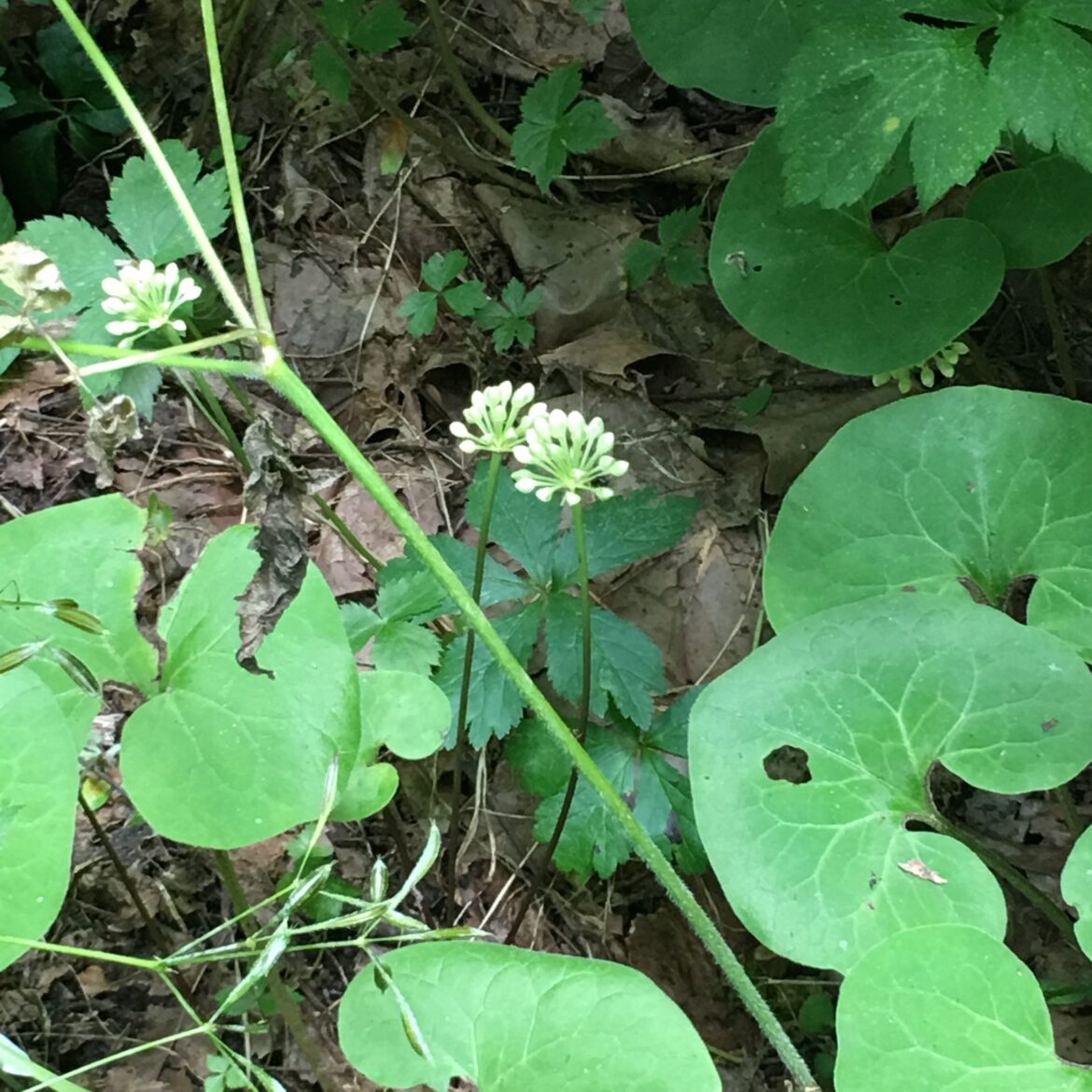July 13th
The 194th Day of the Year
At the turn of summer’s tide, there can be quickening of the psychic pulse, panic that it’s now too late, that all the promises are still to be fulfilled, that there will never be sufficient time, never be summer enough. Then the days become so short they spur a different chemistry, one that points to survival instead of fulfillment; we batten down our souls, make ready for the great test, resigned to the loss of July, but digging in against the winter..
Eliades Quintana
Sunrise/set: 5:17/8:04
Day’s Length: 14 hours 47 minutes
Average High/Low: 85/64
Average Temperature: 75
Record High: 105 – 1936
Record Low: 49 – 1940
Weather
Even though the average temperature distribution for this date is close to that of the previous two days (25 percent chance of 90s, 55 percent for 80s, 15 percent for 70s), highs never made it out of the 60s back in 1990, a rare occurrence in an Ohio July (odds are about 100 to one against it). The 13th is one of the rainiest days of July – sharing that position with July 1st and 2nd – and carrying a 55 percent chance of a thunderstorm. Overcast conditions are recorded a little more than one day out of every three.
Natural Calendar
The ripening of the fields and woods leads the mind into August. The season lies in its details. Late Summer’s dayflowers and Joe Pye weed and euonymus and ironweed come into bloom now in Yellow Springs, the Lower Midwest and the East. Grapes and blackberries and elderberries and wild cherries darken. Black walnut leaves trickle to the grass. Hickory nuts and black walnuts come down. Cricket hunters arrive to hunt the autumn crickets.
But summer need not recede so quickly. Escape at dawn to drive north into the best days of Late Spring. Queen Anne’s lace and chicory are dominant along Ohio highways as the sun comes up; prickly pink teasel, bright sow thistles, and orange trumpet creepers flower beside them.
Then by Chicago, a taste of Yellow Springs solstice returns to the landscape. Yellow sweet clover, emblem of Early Summer, reappears, and some Canadian thistles come back into bloom near Rockford, Illinois, downy seeds replaced by inflorescence, time collapsing back into itself, contracting into the familiar spaces of June.
In Wisconsin, redwing blackbirds still guard their territories on fences along the road past Madison. Black raspberries ripen once more along the Dells. At La Crosse, cattails are still small, a month behind the fat cattails of Jacoby Swamp.
At St. Cloud, Minnesota, June’s pink spirea keeps its blush. Wheat fields (completely cut in southwestern Ohio) become lighter and lighter brown, even showing shadows of green past Fargo, North Dakota. At Grand Forks, dogbane and parsnips (all to seed in southwest Ohio) spread in early flower along the spinning currents of the Red River of the North.
At sunset of a long day on the road, in Winnipeg, Manitoba, almost a thousand miles from my home, modest stella d’oro lilies enter first bloom, become golden zeitgebers that dip their season deep from the well of Yellow Springs May.
Daybook
1982: Wild black raspberries cut back in the yard. Field corn is in full bloom.
1984: Rose of Sharon bloomed today.
1986: Cicadas a little stronger today.
1988: Velvetleaf bloomed in the garden.
1989: First cicadas heard in the distance. Question mark butterfly in the garden.
1992: First yellow coneflower unravels in the south garden. Field corn is still not tasseling.
1993: Yucca completely gone, some of its green seedpods fully formed. Purple coneflowers are in full bloom now in the east garden.
1996: Showy coneflowers open in the south garden. Pink phlox there blooms overnight.
2001: South Glen with Mike: Honewort to seed. Sweet Cicely seeds have turned black. Some buckeye leaves rusting. Clustered snakeroot lanky with age, pollen gone.
2003: Cardinals strong by 5:00 this morning. A young grackle fluttered away from me at the woodpile this evening.
2005: At the park across from the Catholic church, black walnuts are about full size, and a few yellow walnut leaves surround the tree trunk. On the east fence, the first golden trumpet vine flowers are open. The mature orange trumpets have been blooming quite a while throughout the village. No robin chorus in the morning, but the thinning cardinal songs keep the summer rhythm near 4:30 a.m.
2006: One cardinal at 4:12 this morning, then silence until after 4:30. No robin song heard. Young cedar waxwing chased by Louie the cat yesterday afternoon.
2007: Robins and cardinals strong before dawn this morning. At the bird feeder, a pair of nuthatches fed constantly as we ate lunch. They seemed to be taking the seeds back to their young. Tiger swallowtails seen every day now. Hummingbird moths are common.
2008: Robins, cardinals, grackles and crows all on schedule this morning. Throughout the day and evening, a clan of grackles fed on the lawn and in the white mulberry tree, cackling and whining, taking care of their young. Hummingbirds and hummingbird moths in the flowerbeds. A red admiral butterfly seen near suppertime, the first in a long time. In the alley, the apples on our apple tree seem full size, and the black raspberries are shriveling up. Burdock and tall coneflowers have budded. The first showy coneflower joined the lilies and monarda in the north garden near the peach tree. Ramp flowers have started to fade under the mock orange. More light showers of yellow locust leaves this evening.
2010: Six young skunks, white-plumed tails high, explored the yard this morning at about 5:30. At one point, they playfully surrounded Monk, one of our Siamese cats. In the alley, the tall coneflowers have started to blossom, the earliest I’ve noticed their blooming. Fifteen different daylilies flowering, down considerably from last year. Flying around the porch this afternoon: mating black hoverflies.
2011: Grackle fledglings still crying, but less than a few days ago.
2012: At 5:00 this morning, only cardinals (loud and strong) and the buzzing of tree crickets. No robins heard, no sing-song, no peeping. Sparrows started cheeping at 5:10. Two male yellow swallowtails seen at the butterfly bush today, then a giant swallowtail and an Eastern black. Beautiful winds in the early afternoon. Twenty-six lily varieties this morning, very few flowers on each clump. One blackberry turning red in the berry tangle at the north side of the yard. One starling fledgling begging from its parent this morning. High, grating cricket calls through the night. Frog croaking in the early morning dark.
2013: Again at 5:00 this morning, cardinals were the dominant singers, to a background of doves. On Stafford Street, a few robins peeping, but no raucous whinnies. A sparrow sang on Dayton Street at about 5:10. Thirty-three lilies in bloom today. Full color in the garden now.
To Cincinnati and back: cattails, teasel, Queen Anne’s lace, and chicory predominate along the freeways. A few trefoils and crown vetch and very late fragments of white sweet clover. At Ellis Pond, the ground under one sycamore was covered with newly fallen bark. When I left Annie’s house, the first-quarter moon was so bright and crisp in the black sky.
2014: Thirty-four lilies in bloom: we probably won’t make 40 this year. And the number of blossoms has declined; the zinnias, however, are taking over the color.
2015: Fifty-three lilies in bloom, up 13 from yesterday; they ebb and flow, fewer but brighter than the zinnias still. In the pond, the very first arrowhead flowers appeared overnight. When I rode a ways down the bike path, there were the first yellow touch-me-nots I’ve seen so far this summer.
2016: Grand Forks, North Dakota: As John and I drove north, I saw the wheat fields becoming lighter and lighter brown, even showing a green tint by the time past Fargo. In Grand Forks, stella d’oro lilies are in full early bloom, simple zeitgebers that place the floral season back well into Early Summer. Fishing on the Red River of the North, many catfish caught and released, some hungry from just coming off of spawning, and some fish still spawning.
2017: As I did Tai Chi in the studio this morning, two small raccoons, maybe a third grown, ran from the bushes to their den under the studio floor. Lily count: 121 blossoms.
2018: When I walked home at 5:00 this morning, cardinals and robins and sparrows were in full song. Jill sent photos of her first clematis and morning glories. And a surge in lilies here, 189 blossoms in all, up more than 50 from yesterday. Zinnias and tithonias producing solid color now and texture behind the lilies, dahlias and cannas still thin. The standard mid-season hostas have completed their blossoming, the turn toward Late Summer speeding up. Along the bike path, only tall bell flowers in bloom. In one soybean field: the crop is in bloom.
One silver-spotted skipper this morning in the circle garden, then a spicebush swallowtail, then around noon a male tiger and then when I happened to look out the window in the afternoon, I saw a monarch in the milkweed and zinnias. Cicadas boisterous throughout the day and evening. First katydid heard along Limestone Street as I walked to Jill’s around 10:00 p.m.
2019: One hundred eighty-two day lily blossoms this morning, 24 ditch lilies. The deer have started to take a few buds, the fawns getting hungry. As I walked Ranger at 5:30 this morning, a red-shouldered hawk cried out and swooped through the alley, and all the robins screamed, and a blue jay called an alarm, and a minute or so later the hawk flew away toward the west, several birds in pursuit.
In Louisiana, hurricane Barry to make landfall, spins slowly over New Orleans, pouring inches and inches of rain. Barry is the first hurricane I remember to form inland in the southeast (instead of forming in the Atlantic and moving west) as a cluster of storms and then circle back as a major weather event. The increasing amounts of rain are a relatively new phenomena, signs of the climate in flux.
2020: Fog across the village before dawn, foretaste of August. John Blakelock reports the first monarch butterfly on his milkweed. Maggie has been sending photographs of monarch caterpillars in her butterfly weed for the last three days. More rabbits seen in the neighborhood. This is definitely the year of the rabbit. In the lily garden: 165 day lily, 29 ditch lily, two Asiatic lily blossoms. The phlox are coming in, but lanky in the shade. One black swallowtail sighted at the edge of town, possibly a zebra swallowtail speeding over the zinnias this afternoon.Under the honeysuckles, ramps still bloom.
In natural history, every event is a sign, and every sign is what it signifies. Every observation tells a precise time of the Earth’s turn and of one’s personal relationship with the Sun.
Leon Quel


